Overview
Rust includes a comprehensive set of features and benefits that enhance performance, safety, and concurrency in software development, primarily through its ownership model and strong type system. The article highlights how these elements, along with advanced tools like Cargo and Kodezi, enable developers to create secure, efficient applications while fostering a growing and supportive community, thus solidifying Rust's position as a leading programming language.
Introduction
In the world of software development, efficiency and safety are paramount, and Rust emerges as a formidable contender in this arena. With its unique ownership model, Rust not only guarantees memory safety but also empowers developers to build high-performance applications free from common pitfalls like memory-related bugs.
This article delves into the multifaceted advantages of Rust, exploring its robust features, development ecosystem, and the latest enhancements that make it a top choice for modern programming. From the innovative tools that streamline workflows to the vibrant community that fosters collaboration, discover how Rust is positioned to meet the evolving demands of the tech landscape while ensuring secure and maintainable code.
An Introduction to Rust: Features and Advantages
This programming language stands out as a systems option that prioritizes performance, safety, and concurrency. Central to its appeal is the ownership model, which guarantees memory safety without the overhead of a garbage collector. This innovative method enables creators to build high-performance applications while significantly minimizing the risk of memory-related bugs.
Notably, the strong type system and pattern matching capabilities of this language promote the development of clean, maintainable code. Additionally, the language includes zero-cost abstractions, enabling programmers to leverage advanced functionalities without incurring runtime costs. Tools like Kodezi facilitate automated code debugging, enabling instant identification and resolution of codebase issues, providing detailed explanations and insights into what went wrong and how it was resolved.
This not only enhances performance but also ensures adherence to the latest security best practices and coding standards in mere seconds. According to survey data, which includes responses from 45,346 individuals, the community is growing, as reflected in its increasing adoption among developers. As Paul Jansen, CEO of To be, aptly points out, the community is expanding, including the number of third-party libraries and resources.
In short, the programming language is preparing itself for a top 10 position in the Tiobe index. This growth is particularly significant when considering the competitive landscape, especially since SQL was added to the TIOBE index in 2018. Furthermore, while developers working with Nim, Erlang, and Apex experienced an increase in median reported salaries in 2024, the programming language's focus on performance and safety, supported by advanced tools, continues to make it a compelling choice for modern software development.
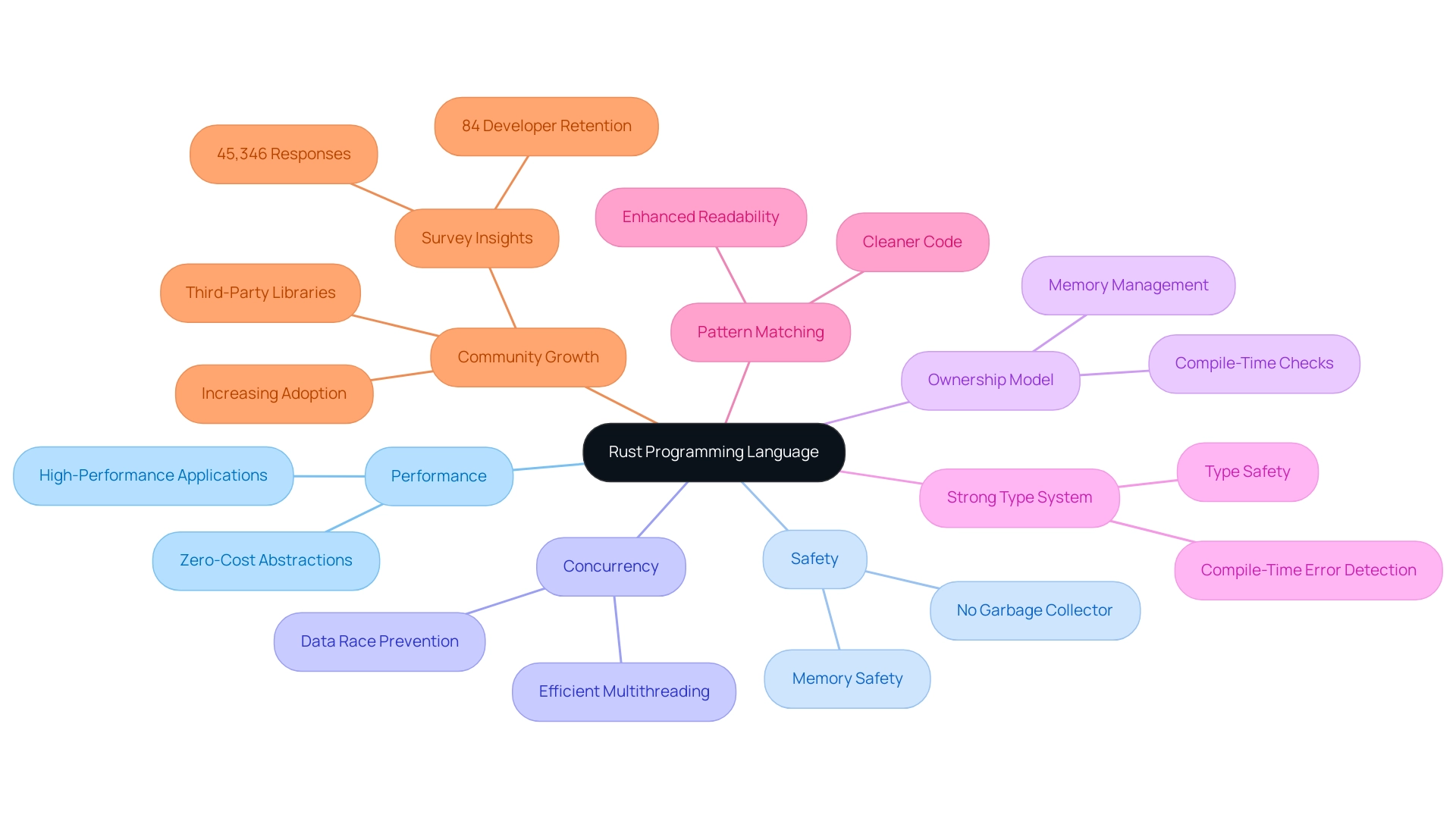
Rust in Action: Development Tools and Ecosystem
The development ecosystem of the language is designed to maximize efficiency and enhance the programming experience. Central to this ecosystem is Cargo, a powerful package manager and build system, which simplifies both dependency management and project setup. Indeed, usage statistics suggest that Cargo is an essential resource in more than 70% of projects involving the Rust programming language, highlighting its crucial function in the workflow of programmers.
Comparatively, Docker is utilized by 59% of professional developers, highlighting the competitive environment of development resources. The programming language's popularity is particularly notable in creating:
- Server backends
- Web and networking services
- Cloud technologies
Complementing Cargo, integrated development environments (IDEs) like RustRover and Visual Studio Code offer robust support, featuring essential resources such as:
- Code completion
- Debugging
- Integrated testing
This streamlines the development process. Furthermore, the community has cultivated a rich library of frameworks, which Rust includes, such as:
- Rocket for web development
- Tokio for asynchronous programming
This enables programmers to effectively utilize the language across various applications. This varied selection of resources not only boosts productivity but also establishes it as a top option for contemporary software development, especially in areas like server backends and cloud technologies. As the working environment changes, the stability of hybrid programmers at 42% and the rise in in-person work to 20% may affect how teams adopt and utilize tools.
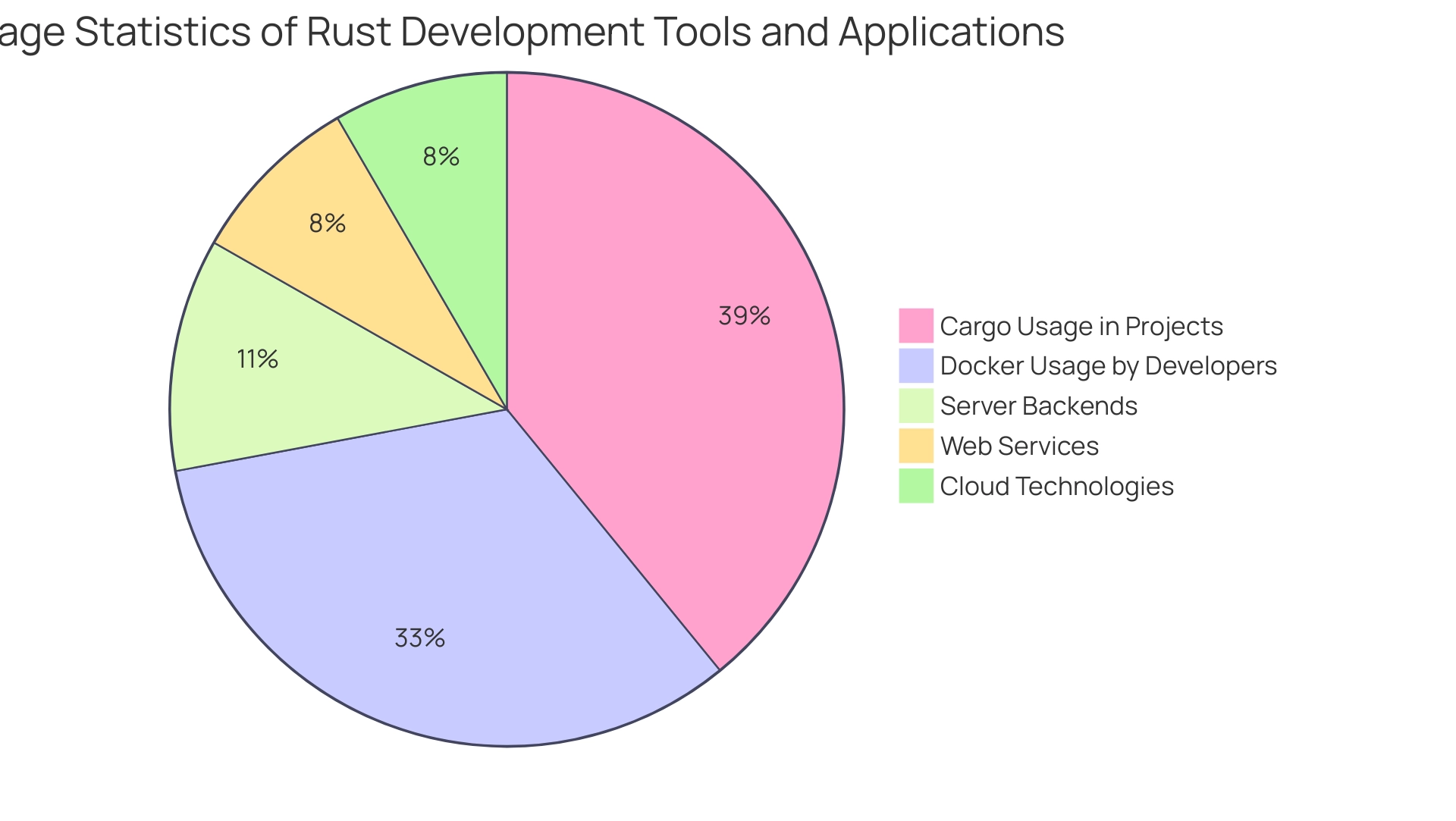
Latest Developments: What's New in Rust 1.76 and Beyond
Rust 1.76 has rolled out a host of innovative features that significantly enhance the coding experience. Significantly, the enhancements to the async/await syntax render asynchronous programming not only more intuitive but also more efficient, enabling programmers to write cleaner, more straightforward code. This version also introduces enhanced compile-time diagnostics, which offer programmers clearer and more actionable error messages, streamlining the troubleshooting process.
By leveraging Kodezi, an AI-powered tool for automated code correction and bug analysis, programmers can further enhance their productivity. Kodezi instantly identifies and fixes codebase issues, providing detailed explanations of what went wrong and how it was resolved, which allows for rapid issue resolution and optimization of code to adhere to the latest security standards. Furthermore, new standard library features—such as additional iterator methods and optimized collections—simplify coding practices and elevate overall productivity.
A significant enhancement Rust includes the addition of Euclidean remainder and division operations (div_Euclid, rem_Euclid) to all numeric primitives, thereby enriching the development toolkit. Additionally, the prohibition of user-defined macros named macro_rules reflects a commitment to maintaining code clarity and integrity. Practical uses of these advancements can be observed in the updates to the Android NDK in version 1.68, demonstrating how these enhancements affect programmers and their workflows.
By embracing these advancements and utilizing Kodezi, which differs from tools like Copilot by focusing on debugging rather than autocompletion, developers can harness the evolving capabilities of the language to produce efficient, maintainable code that meets modern development demands. For more information on how to use Kodezi and its supported languages, please refer to our documentation.
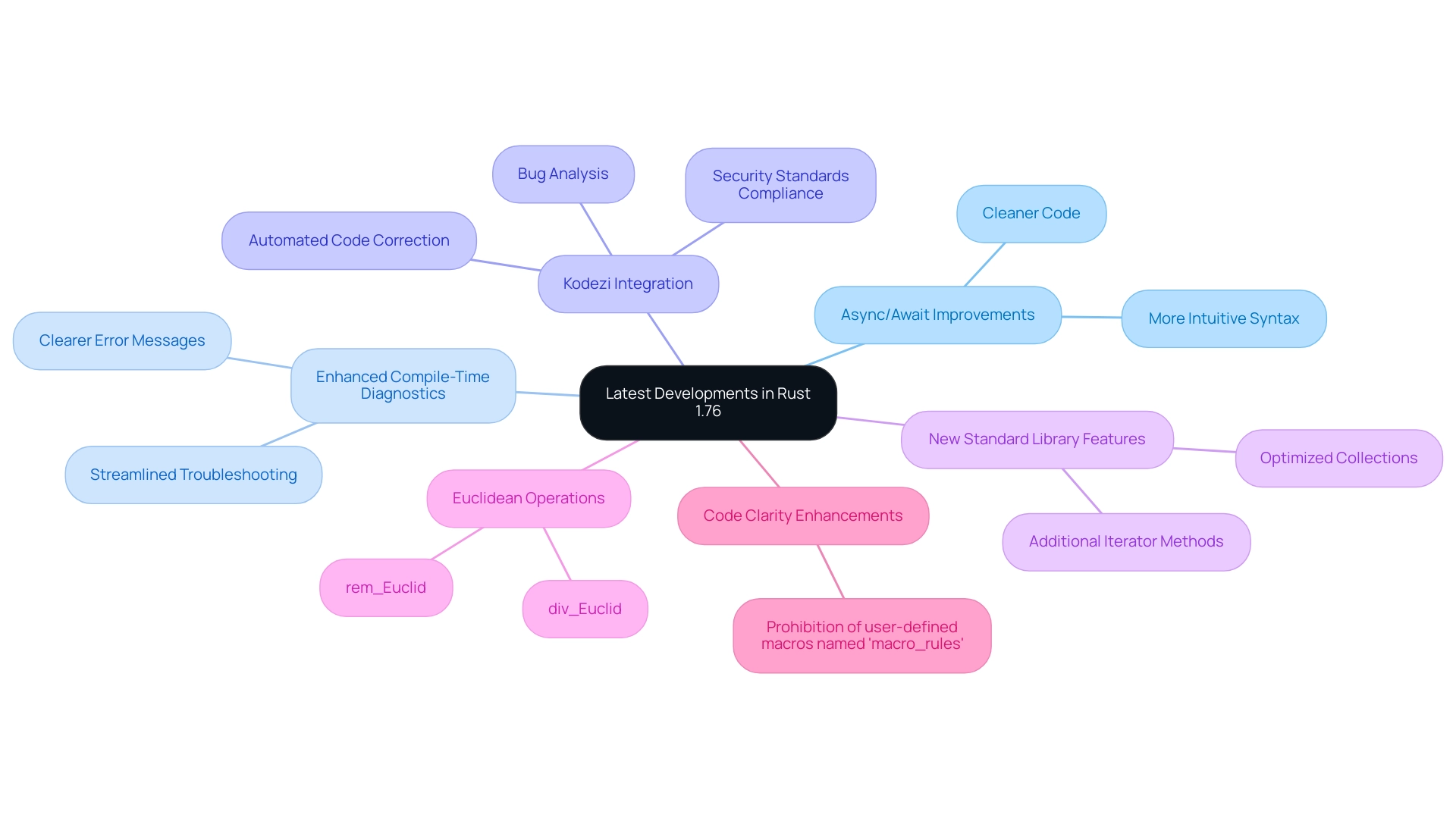
Security First: Rust's Approach to Safe Programming
The design philosophy of this language is fundamentally anchored in safety, establishing it as a leading choice for secure development. The ownership model of the language, which Rust includes, effectively prevents data races and ensures memory safety, dramatically reducing the risk of prevalent vulnerabilities such as buffer overflows. This is particularly crucial as 97 percent of organizations have reported an increase in cyber threats since the onset of the Russia-Ukraine war in 2022, highlighting the urgent need for robust programming practices.
Furthermore, cybersecurity issues are diverse, encompassing threats like phishing, malware, and ransomware, which necessitate a comprehensive approach to security. Incorporating behavior-focused training, like that offered by Keepnet, can assist organizations in reducing risks from human error, enhancing safety features. The strong type system enforces strict compile-time checks, allowing programmers to identify and correct potential errors before they escalate to runtime issues.
Enhanced safety features, such as pattern matching and exhaustive checks, are examples of what Rust includes, requiring programmers to address all possible scenarios, thus improving code security. Additionally, the Managed Detection and Response (MDR) case study illustrates the effectiveness of proactive threat detection, with organizations leveraging these services reporting a 50% reduction in the time to detect and respond to threats. By utilizing these safety mechanisms, this language provides programmers with the tools essential to build secure applications confidently, aligning with the latest advancements in safe programming practices and addressing the pressing need for effective vulnerability prevention in today’s cyber landscape.
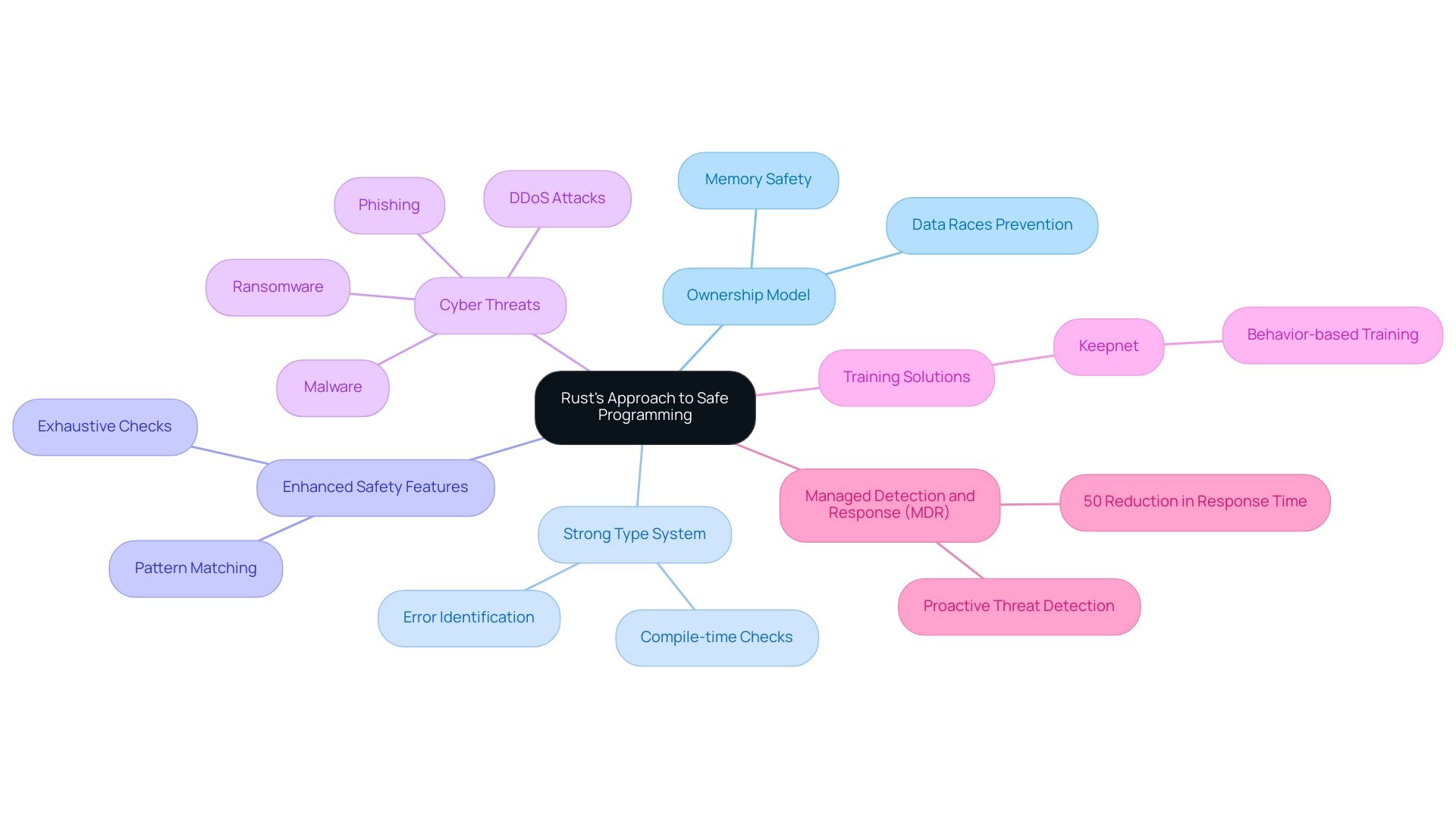
The Rust Community: Resources and Support for Developers
The community flourishes as an inclusive and resource-abundant setting, serving individuals at every skill level. At the forefront is the official programming language website, which offers extensive documentation, tutorials, and guides designed to facilitate a smooth onboarding experience for newcomers. Enhancing these resources are collaborative platforms such as the Users Forum and Discord channels, where individuals can participate in meaningful discussions and problem-solving.
Furthermore, the wealth of open-source projects available on GitHub not only provides avenues for practical learning but also encourages contributors to engage with real-world applications. This collaborative spirit empowers developers to refine their skills, exchange knowledge, and remain informed about the latest best practices in programming. As the community grows, initiatives like the Foundation's Security Initiative emphasize a dedication to improving the language's security and performance.
The ongoing growth of the Rust community is reflected in a quote from a community leader:
"It is exciting to see the continued growth of professional Rust usage and the confidence so many users feel in its performance, control, security and safety, enjoyability, and more!"
Additionally, the community's diversity is underscored by the statistic that 26% of respondents in 2023 identified as women. Current trends, such as the integration of AI tools—where 59% of programmers now use AI tools to assist with their work—demonstrate the evolving landscape of development workflows and the impact on career opportunities for professionals in the field.
This underscores the collective effort to foster a supportive environment for all developers.
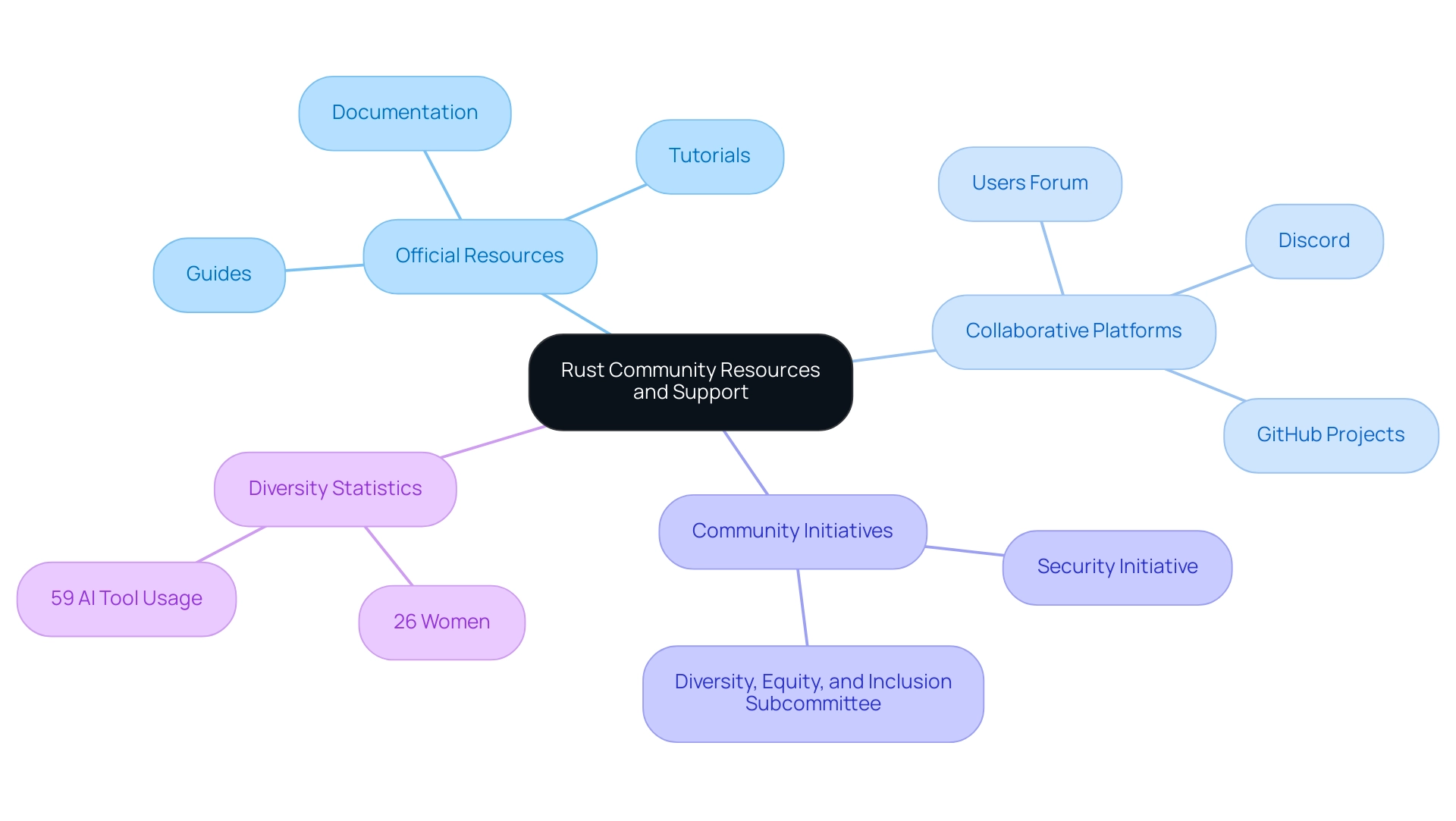
Conclusion
Rust represents a significant advancement in the realm of software development, merging performance with safety through its innovative ownership model. By ensuring memory safety without the overhead of a garbage collector, Rust empowers developers to build high-performance applications while minimizing the risk of memory-related bugs. The language’s robust type system, zero-cost abstractions, and rich development ecosystem—including essential tools like Cargo and Kodezi—further enhance productivity and streamline workflows.
The latest updates in Rust, particularly version 1.76, showcase a commitment to improving the programming experience with enhanced async/await syntax and clearer compile-time diagnostics. These advancements, coupled with Rust’s focus on security—addressing the growing concerns around cyber threats—position it as a leading choice for developers aiming to produce secure, maintainable code. The community surrounding Rust continues to flourish, providing an inclusive environment rich with resources, support, and opportunities for collaboration.
In a rapidly evolving tech landscape, Rust stands out as a formidable contender, equipped to meet modern programming demands while ensuring high standards of safety and efficiency. As developers increasingly adopt Rust, the language is poised to solidify its place among the top programming languages, making it an invaluable asset for anyone looking to enhance their coding practices and build resilient applications.
Frequently Asked Questions
What makes this programming language a strong choice for systems programming?
This programming language prioritizes performance, safety, and concurrency, featuring an ownership model that ensures memory safety without the overhead of a garbage collector, significantly reducing the risk of memory-related bugs.
How does the programming language promote clean and maintainable code?
It has a strong type system and pattern matching capabilities, which help developers create clean and maintainable code.
What are zero-cost abstractions, and how do they benefit programmers?
Zero-cost abstractions allow programmers to use advanced functionalities without incurring runtime costs, enhancing performance while maintaining efficiency.
What role does Kodezi play in the programming language's ecosystem?
Kodezi facilitates automated code debugging, enabling instant identification and resolution of codebase issues, along with providing detailed explanations of errors and their resolutions.
How is the community around this programming language evolving?
The community is growing, as indicated by survey data from 45,346 individuals, showing increasing adoption among developers and a rise in third-party libraries and resources.
What position is the programming language aiming for in the Tiobe index?
It is preparing for a top 10 position in the Tiobe index, reflecting its growing popularity and relevance in the competitive landscape of programming languages.
What is the significance of Cargo in the programming language's development ecosystem?
Cargo is a powerful package manager and build system that simplifies dependency management and project setup, being essential in more than 70% of projects involving the language.
What types of applications is this programming language particularly popular for?
It is notably used for creating server backends, web and networking services, and cloud technologies.
What integrated development environments (IDEs) support this programming language?
IDEs like RustRover and Visual Studio Code provide robust support, featuring resources such as code completion, debugging, and integrated testing.
What frameworks are available for this programming language?
The language includes frameworks like Rocket for web development and Tokio for asynchronous programming, enhancing its usability across various applications.




